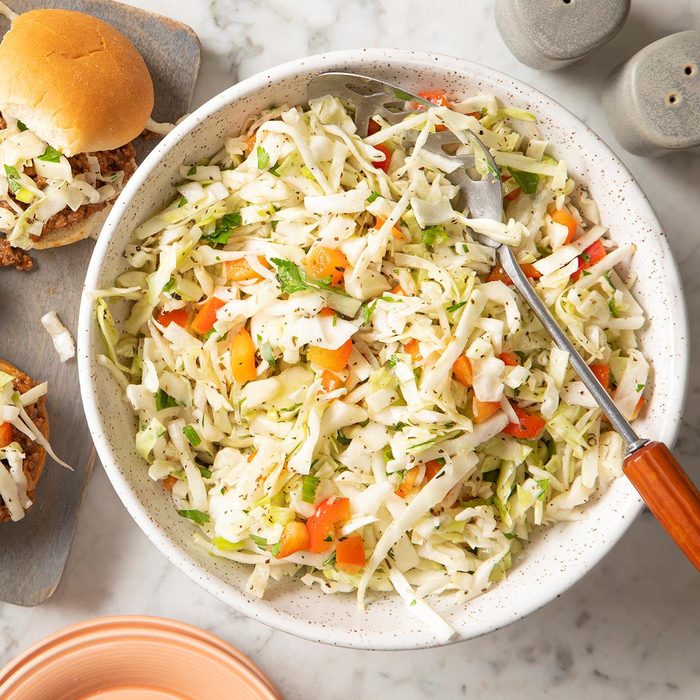Vinegar Coleslaw Tips
Can you use other types of vinegar to make coleslaw?
Feel free to substitute other
types of vinegar instead of using apple cider vinegar for this no mayo coleslaw recipe. Keep in mind that each type of vinegar has a distinct flavor profile, so you’ll want to adjust the quantity of the coleslaw's ingredients to suit your tastes. For example, white wine vinegar and champagne vinegar are more acidic than rice vinegar or balsamic vinegar, so you may want to add a little extra sugar to compensate.
What else can you add to vinegar coleslaw?
This vinegar coleslaw recipe is very versatile, so start by choosing the right
type of cabbage—green, red, savoy, or Napa cabbage. Once you
shred the cabbage, consider additional vegetable ingredients. Carrots, onions and chili peppers always make nice additions, as do herbs and fruits like apples or dried cranberries. Finally, this is a no mayo
coleslaw recipe, but you could add mayonnaise or Greek yogurt to the mix to smooth out the tangy edges.
How do you serve vinegar coleslaw?
Vinegar coleslaw makes an excellent topping for rich, meaty mains like
tangy pulled pork sandwiches or barbecue brisket. We also love it as a cool, crunchy contrast for serving Mexican dishes like tacos or burritos. You can’t go wrong by making this your go-to
potluck side dish, either.
How long will vinegar coleslaw last?
Store this vinegar coleslaw recipe in an airtight container, where it is good in the refrigerator for up to 4 days. The slaw will become softer the longer it sits in the fridge, so plan to serve it right away if you desire a crunchy coleslaw.
—Lindsay Mattison, Taste of Home Contributing Writer
Nutrition Facts
3/4 cup: 57 calories, 2g fat (0 saturated fat), 0 cholesterol, 195mg sodium, 7g carbohydrate (4g sugars, 2g fiber), 1g protein. Diabetic Exchanges: 1 vegetable, 1/2 fat.



















